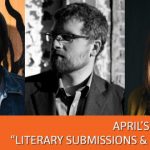Coach’s Corner | Practice, Project, or Both…and Why This Matters
Being able to identify the project that comprises your practice can make fundraising opportunities more accessible.
Not sure if what you do is considered a project? Then read below for some insights from Sarah Corpron, Acting Director of Business Services on how to tackle this question. Here’s Sarah with more:
I often speak with artists who are looking for different ways to build a financially viable creative practice for themselves. They struggle with how to identify funding opportunities and articulate their work to different funding audiences. Developing a multi-faceted funding strategy is very complex, but when faced with this task my first question for any artist is: “Is your practice project-based?”
Setting Definitions
You might be wondering what I mean by “project” and why this even matters? To address the first, let’s set some definitions (as I see them).
Practice – The work, both physical and mental, of creating your art or craft. This is a pretty broad definition; it is anything you do in order to execute your artwork.
Project – A specific creative activity for a particular purpose, over a specific period of time. Examples: Directing a film or play, curating an exhibition, writing a book, creating a public installation, etc. A project is defined and specific, it has constraints.
Your practice can include projects and some practices are inherently project-based. Being able to identify and define the project that comprises your practice can make fundraising opportunities more accessible.
So, why does this even matter?
Practically speaking, if you are trying to determine where your best funding opportunities are, knowing if your practice includes or is project based is a necessary first step. Here are some examples of how this might change your funding opportunities:
Fiscal Sponsorship – this is a tool that many artists use to fundraise for their projects with a public benefit (we’ll get to this in a bit). It is a program that enables individuals to collect tax-deductible contributions and apply for grants for their project related activities. Fiscal Sponsorship relationships are project based.
Donors – Contributions from individuals are also easier to cultivate if you have a project that they can support. You can certainly run a crowdfunding campaign for general artistic practice support, but if you can define a specific project for people to rally behind, you will also be able to speak more directly about what their dollars will fund and why they should be passionate about supporting you.
Government and Foundation funding – Most public and foundation support is made in the form of grants. Grants are another source of funding that relies heavily on clearly defining what your project is. Most grant funding available to artists is for projects only, not for a generalized practice. Fellowships and merit based awards are an exception to this rule. Identifying the right grant opportunity for you and then applying for it will require a clear understanding of exactly what your project is, what the results will be, and how much it will cost to execute. A grant might also require that you articulate what the public benefit is for your project.

What does public benefit mean?
Let’s circle back for a moment and talk about public benefit. You might have a clearly-defined art project for which you need funding, but if fiscal sponsorship is something you think might be helpful to you, then your project also needs to benefit the public in some way. Because donations to fiscally sponsored projects are tax-deductible, projects must add value to the public sphere and not only benefit the artist’s private gain. For the same reason, many grants, regardless of whether they require a fiscal sponsor or not, will also need you to show that your project benefits the public.
How do you know if your project has a public benefit?
Some easy ways to determine this is through analyzing what your project will do, what the final outcome will be: the art work created and the audience’s interaction with it. Perhaps your work will be shown through a public screening or performance, or it explores a specific issue, or it facilitates access and learning, or perhaps your project offers opportunities for an underrepresented group of people.
If you are still at a loss on how to define the public benefit of your project, try to think about what your art project will communicate with audiences (what is it saying?) and how audiences will connect and interact with that message.
So you have a project…what’s next?
Take some time to think about how you describe and define your project. What is the end goal, how do you measure success, what is the project budget, and what is the timeline? You might also want to consider what your possible income sources are and what current skills or relationships you can leverage to help you secure funding and execute this project. Considering these things will help position you to better identify what funding options and strategies are right for you.
If you need a structure to help you put all of this down on paper, take a look at our Fiscal Sponsorship application. It mimics what you might see for a basic grant application and can be a great tool for building your project outline.
This was a nice post, but I don’t have a project, I just want to fund my practice.
Admittedly, there are less funding opportunities for general practice support. Earned revenue (sales), crowdfunding and applying for fellowships or awards are the primary ways that artists fund their practices. Here are some resources you might find helpful in your effort to grow your practice:
NYFA Source – online database of opportunities and resource across the US for individual artists.
NYFA Learning – the NYFA Learning team maintains a bounty of professional development resources for artists trying to further their practice.
Your State Arts Council – every state is different, but your state and local arts agencies will often have their own lists of resources for practicing artists specifically within those areas. It is a great place to start research!
NYFA Coaching – contact [email protected] and ask about meeting with someone to discuss your business and funding strategies. NYFA Coaching sessions are individualized, fee-based conversations with NYFA staff and require no current enrollment in a NYFA program. They are open to anyone!
NYSCA/NYFA Artists Fellowship – a merit-based grant to help further individual artists’ practices in New York state.
Creative Capital – grants, programs, and resources for artists.
Foundation for Contemporary Art, Emergency Grant – this is open to individuals who have a show or performance opportunity that they need urgent funding for.
This post is part of NYFA’s “Coach’s Corner” blog series, inspired by our NYFA Coaching pilot program. The pilot program offers personalized, one-on-one support for artists and administrators facing their own professional hurdles and deadlines. Learn how specialized NYFA staff can help you strengthen your professional materials and recommend “next steps” for furthering your professional goals. If you have questions about this pilot program, contact [email protected].
NYFA Fiscal Sponsorship’s next quarterly no-fee application deadlines are June 30 and September 30, and you can learn more about NYFA’s Fiscal Sponsorship program here. Read about other exciting projects utilizing sponsorship in our NYFA Fiscal Sponsorship Directory.
Images: Go!PushPops’ “Oral History of Ice Cream” (Fiscally Sponsored), Mandala Cypher Workshop, collaboration with UNDAKOVA, 2016, at Sixth Street Community Center, Photo: Katie Cercone; NA8, part of Alexandra Chasin’s Writing On It All (Fiscally Sponsored), Photo: Stephanie Orentas





